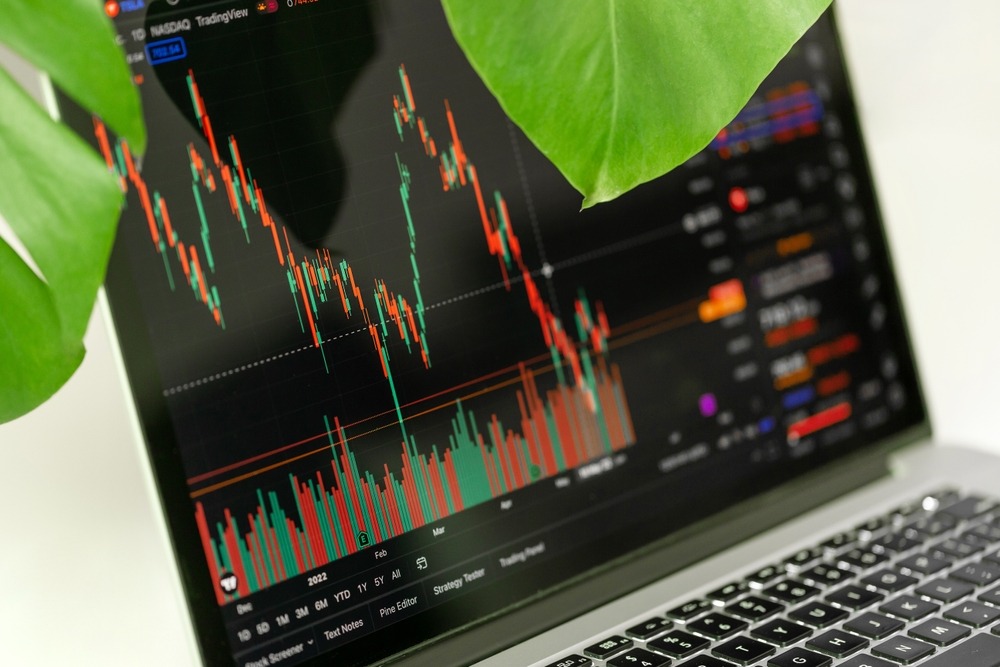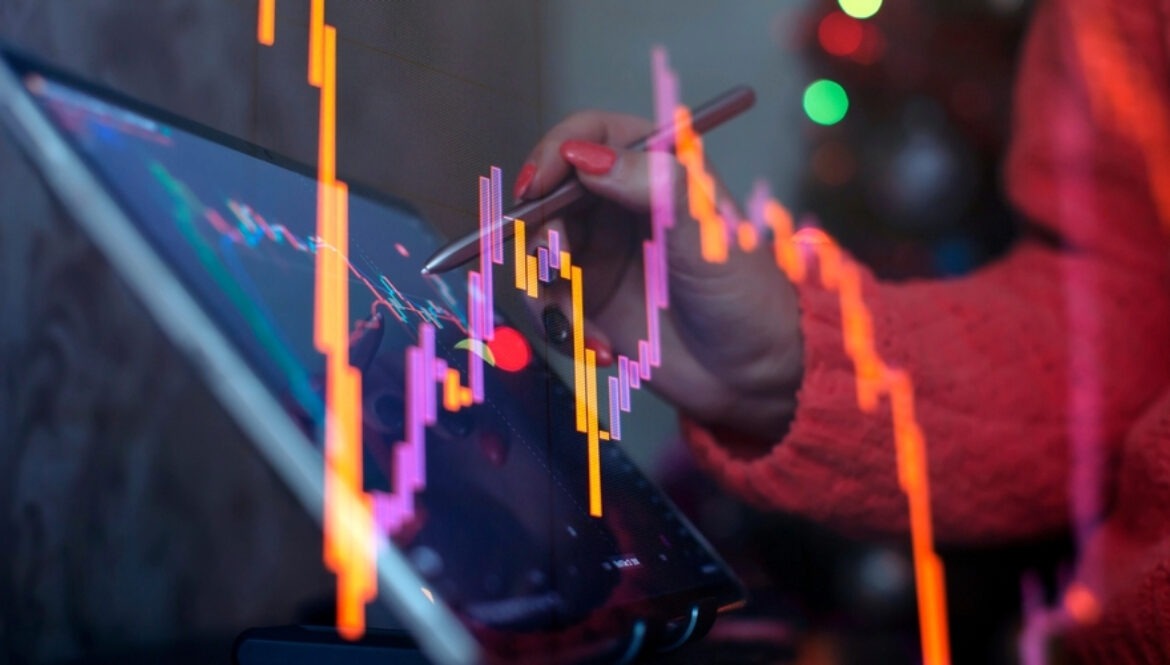Key Takeaways:
- Tick Scalping Strategy involves capturing small price movements (ticks) in markets like forex, futures, and CFDs.
- Tick Count Selection: Choose a tick count that aligns with your trading style, e.g., 200 ticks for 5-minute charts or 34/50 ticks for dedicated scalping.
- Effective Risk Management: Scalpers use multiple indicators and statistical formulas to minimize risks while aiming for modest profits.
- Tick Charts: Tick charts offer a granular view of market dynamics, requiring fast execution and access to Level 2 data.
- Experimentation: Finding your ideal tick count is a personalized process; experimentation is key to refining your scalping strategy.
Have you ever thought about what tick scalping in Forex trade represents? Why is it essential to learn about it if you’re into the dynamic foreign exchange market?
Whether you’re an experienced professional or just entered this marvellous journey of Forex trade, learning about new strategies and approaches can enrich your experience and overall success.
Regardless of your Forex trading experience, it is crucial to note that tick scalping refers to a high-frequency trading strategy that capitalizes on bid-ask spreads. It aims to secure quick “ticks” in various markets like futures, forex, and CFDs.
Successful tick scalping relies on speed, precision, and level 2 trading data access. It often utilizes advanced trading platforms like MetaTrader for rapid trade execution. In this strategy, trend identification and reversal detection play pivotal roles.
However, here are some basics and explanations of Tick scalping that Forex traders should know about!
Tick scalping in Forex trade – explained by a professional
Tick scalping, as the name suggests, is all about capturing a single tick per trade. Once traders have honed this technique, they execute numerous trades to amass these ticks within a session.
A high-frequency trading strategy at the tick level underpins this core concept of this type of scalping. Here, traders place many trades quickly to secure one or a few ticks per trade.
Typically, positions are held for seconds or minutes, aiming for modest profits and leveraging small price movements. While individual gains may appear modest, the cumulative effect of multiple trades can yield significant results.
Effective risk management strategy
In essence, tick scalping serves as an effective risk management strategy. Traders minimize risk by adopting a multi-indicator approach and relying on a statistical formula to succeed.
An automated trading routine featuring a user-friendly interface often facilitates the process. In addition, the no-repainting feature ensures the reliability of technical analysis tools, enhancing the strategy’s overall effectiveness.
Xmaster formula indicator – true explanation

The XMaster Formula indicator is a valuable tool for traders in the financial markets who appreciate simplicity and rely on visual signals for executing trades and analyzing long-term trends.
Its red and green stripes provide clear indications, signalling potential selling and buying opportunities.
Nonetheless, its efficiency hinges on the trader’s skill in deciphering these signals within the backdrop of the current market trend and implementing prudent risk control measures.
How is the XMaster Formula indicator calculated?
The XMaster Formula Indicator, with its mysterious algorithm known only to its creators, has piqued the curiosity of traders.
It’s considered a sophisticated fusion of the Relative Strength Index (RSI) and the Moving Average Convergence Divergence (MACD), enhancing the analysis of momentum and trends and adding an intriguing layer of mystique to its application.
Installing the XMaster Formula Indicator in MT5 is straightforward:
- Download the XmasterFormula.ex5 file from a trusted source.
- Open MT5 and access the ‘Navigator’ panel.
- Drag and drop the .ex5 file into ‘Navigator.’
- Place the file in the ‘Indicators’ directory under ‘MQL5.’
- Restart MT5 to activate the indicator.
To apply the XMaster Formula to a chart, go to ‘Insert,’ ‘Indicators,’ ‘Custom,’ and select ‘Xmaster Formula’ from your toolbar.
Trading with the XMaster Formula indicator involves two main strategies: reversal and continuation.
- Reversal Strategy: This strategy focuses on finding points where the market might change direction. Traders using this approach look for signals that suggest a price movement has gone too far (either overbought or oversold) and is likely to reverse. This presents opportunities to enter the market as a new trend begins.
- Continuation Strategy: This strategy is about identifying and following existing trends. Traders use this method to enter trades that align with the current trend’s direction. They take advantage of the market’s momentum for potential gains.
Both strategies rely on signals from the XMaster Formula indicator to pinpoint potential entry points, catering to different trading styles and risk preferences. The next sections you’ll get to see will show you detailed insights into effectively implementing each approach.
Tick Charts vs. Time Charts: Key Differences

Tick and time charts exhibit notable distinctions in how they capture market information. While tick charts resemble standard bar or candlestick charts, their data measurement approach sets them apart.
Time charts meticulously monitor predetermined time intervals, such as 5 minutes or 1 hour, and the corresponding bars or candles reflect these time-based changes.
Conversely, tick charts assess data based on a fixed number of ticks, offering traders a more profound understanding of market dynamics. In tick charts, new bars materialize after a specific quantity of trades, regardless of time elapsed.
This attribute provides a detailed perspective during heightened volatility and generates fewer bars when market activity is subdued.
In essence, this comparison underscores the primary attributes of each chart type: time charts, which are time-driven, and tick charts, which centre on identified trends and price action based on the exchange rate.
Tick Scalping Strategies for Day Trading – Explained
Tick scalping, a favoured method among day traders in the world of currency trading, offers multiple techniques for capitalizing on price movements. Here, we’ll delve into two primary methods:
Tick Scalping with Level 2 Market Data:
- Level 2 data is indispensable when day trading currency, providing intricate insights into how prices move, including bid and ask prices and sizes.
- Day traders utilizing this strategy often execute rapid trades, taking advantage of market conditions to open and close positions swiftly.
- While Level 2 data may come with added costs, certain forex brokers offer it for free, enhancing accessibility for traders.
With Tick Charts:
- In cases where Level 2 data isn’t available or preferred, this type of scalping can still thrive with tick charts.
- This method focuses primarily on chart analysis, relying less on external data. Traders monitor trend lines and short-term fluctuations.
- Speed of execution is pivotal in this strategy, prompting the use of advanced trading platforms and direct market access (DMA) to capitalize on short-term trends.
Employing a Virtual Private Server (VPS) is highly recommended to minimize latency issues and maintain seamless trading.
Both tick scalping approaches have proven effective in day trading, enabling traders to navigate the dynamic world of currency markets with precision and adaptability.
Finding the Ideal Tick Count for Scalping

Determining the ideal tick count for scalping is crucial for success. Scalpers target small price movements within short frames, making tick charts valuable. For 5-minute chart traders, a 200-tick chart can be suitable.
Dedicated scalpers may prefer 34 or 50-tick charts, offering a more granular view for quick decision-making. Discovering the optimal tick count is a process that varies, emphasizing the importance of experimentation to determine what aligns best with your trading strategy.
Bottom Line
Tick scalping is a high-frequency trading strategy in forex and other markets aimed at capitalizing on small price movements or ticks. The choice of tick count for scalping is vital and depends on your trading style and preferences.
For traders using 5-minute charts, a 200-tick chart may be appropriate, while dedicated scalpers often favor 34 or 50-tick charts for precise trend analysis and monitoring market dynamics.
This strategy doubles as an effective risk management technique, utilizing multiple indicators and statistical formulas to mitigate potential losses.
To execute tick scalping effectively, tick charts are essential, demanding rapid execution and access to Level 2 data. Traders should experiment with different tick counts to determine the optimal chart setup that harmonizes with their scalping strategy’s objectives.
















